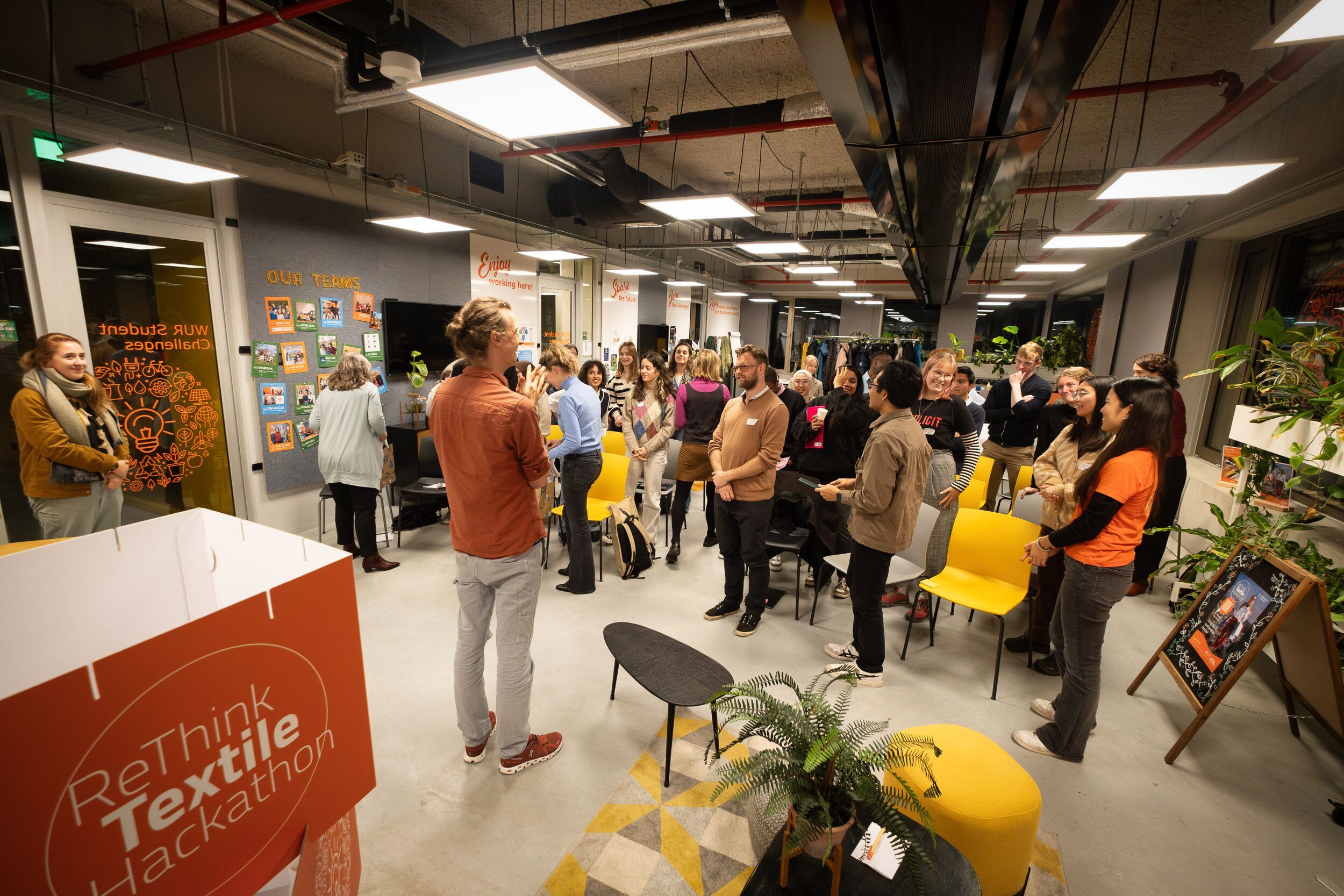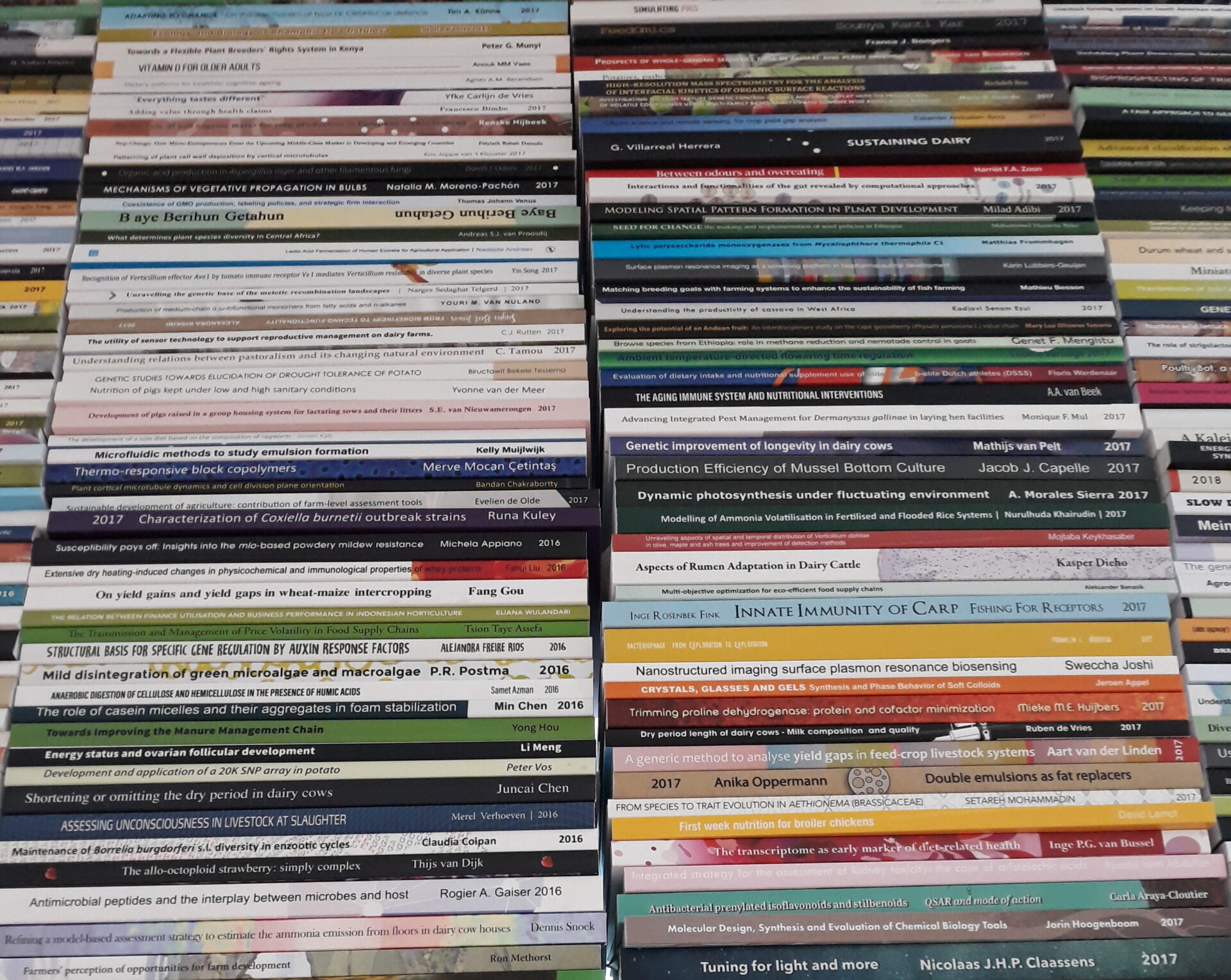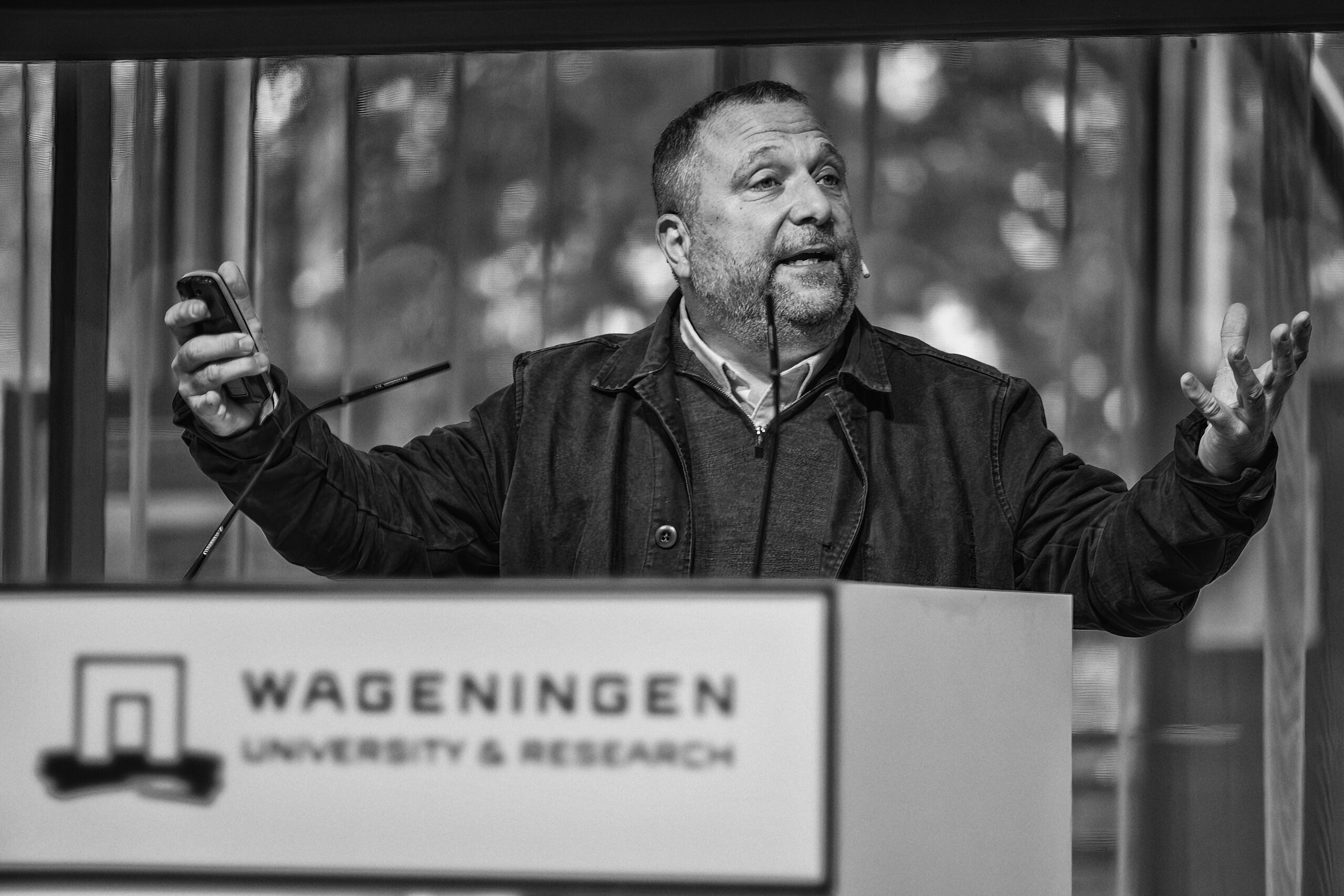On Wednesday, pupils from Eben-Haëzer school won the final of the design competition organized by Wageningen University Science Hub. The competition challenged children in the top classes of primary school to think about how they could increase the biodiversity of their school surroundings.
‘Oh noooooooooooo, we’re becoming extinct!’ The pupils of the Micado class for gifted children at Eben-Haëzer School in Bennekom started their presentation for the design competition with a brief performance of glove puppets, featuring a bee, a butterfly and a flower. A dozen classmates were in the audience with banners to give them support.
In addition to Eben-Haëzer, the finalists consisted of the Day a Week School SWV from IJmond region, De Springplank from Rhenen, De Wegwijzer from Berkenwoude and Erica school from Rhenen. In a packed lecture room in Orion, the five groups presented their ideas to classmates, parents and grandparents and the three members of the jury.
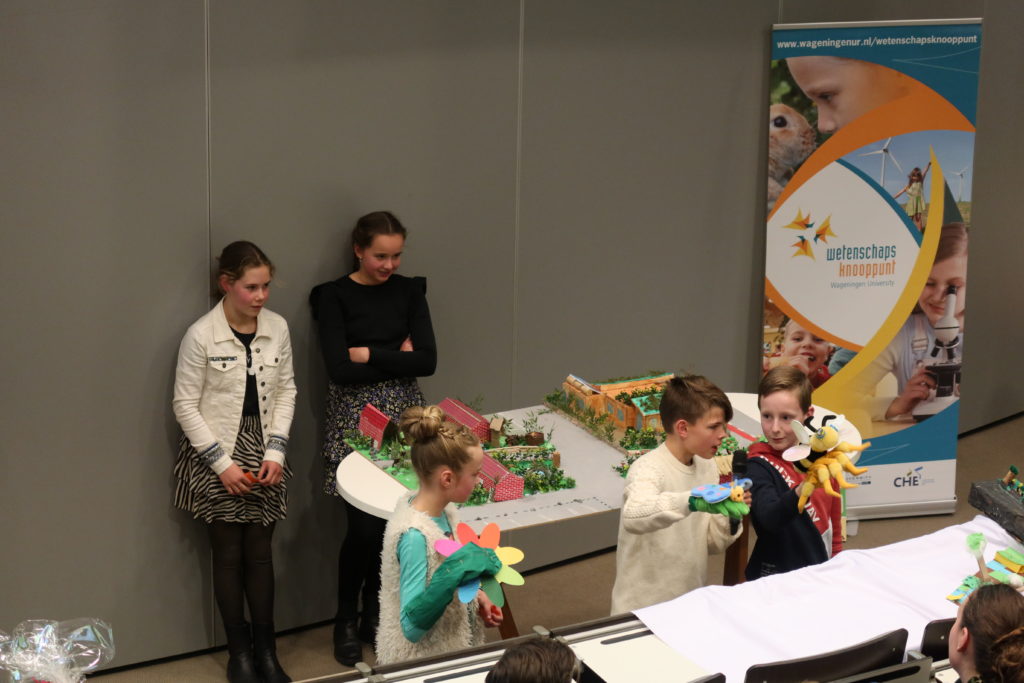
Letter to the municipality
Pupils in the top four classes of primary schools throughout the Netherlands were invited by the Science Hub to come up with a plan to make the area around their school more biodiverse. They had to think about what their design would look like in two years’ time and five years’ time. They were asked to submit a report and a scale model of what the final result might look like.
In the final on Wednesday, the children told the jury what plants and animals they would like to see in the area surrounding their school and why. The groups all had quite similar ideas. For example, they wanted ivy that blackbirds could nest in, and raspberry bushes that animals could feed off. They had even thought about using loam so the water in newly built streams would not immediately sink into the sand.
The local neighbourhood was not forgotten either. The winning school’s proposal included a public compost container made of glass ‘so that everyone can see what happens to organic waste’ and a neighbourhood competition for ‘the most biodiverse garden’ to make people more aware of biodiversity as an issue. A couple of the groups had even thought about permits and funding — ‘we still need to ask the municipality if this is allowed, but we have already written the letter.’ And if the municipality says it’s OK but doesn’t have any money, ‘we’ll just organize a sponsored walk’.
Budding biologists
After their presentation, the winning Micado group took the opportunity to raise the issue of biodiversity on campus. Armed with photos of the grass and paving outside Orion, they concluded the situation was ‘awful’ at first glance. Fortunately, after the last Bioblitz we know this is far from true, but the jury still invited the pupils to come up with recommendations.
At the end, the jury praised the collaborative approach used by the Micado group. They had tackled the project in teams. For example, there was a plant team, an animal team and an architecture team. Despite losing points for the group size — the group consisted of 13 pupils when they were only supposed to have 6 — the school won the competition and also got the most votes from the general public.
This year’s jury consisted of WUR lecturer and Biodiversity Challenge initiator Casper Quist, Wageningen Biodiversity Initiative programme manager Mieke de Wit, and Hilco van Stuyvenberg of Wageningen Science Hub, who also teaches at Ede Christian University of Applied Sciences. When handing out the prizes, Quist said he often feels sad when he thinks about the current state of biodiversity but the enthusiasm of these children — real budding biologists — has cheered him up again.
The nominated ideas this year were:
– ‘Make Groeneweg greener’ from De Springplank in Rhenen
– ‘Biodiversity box’ from Day a Week School SWV in IJmond region
– ‘Perkouwse Jungle’ from De Wegwijzer in Berkenwoude
– ‘Biodiversity, the new reality’ from Eben-Haëzer school in Bennekom
– ‘The Llat garden’ from Erica school in Rhenen

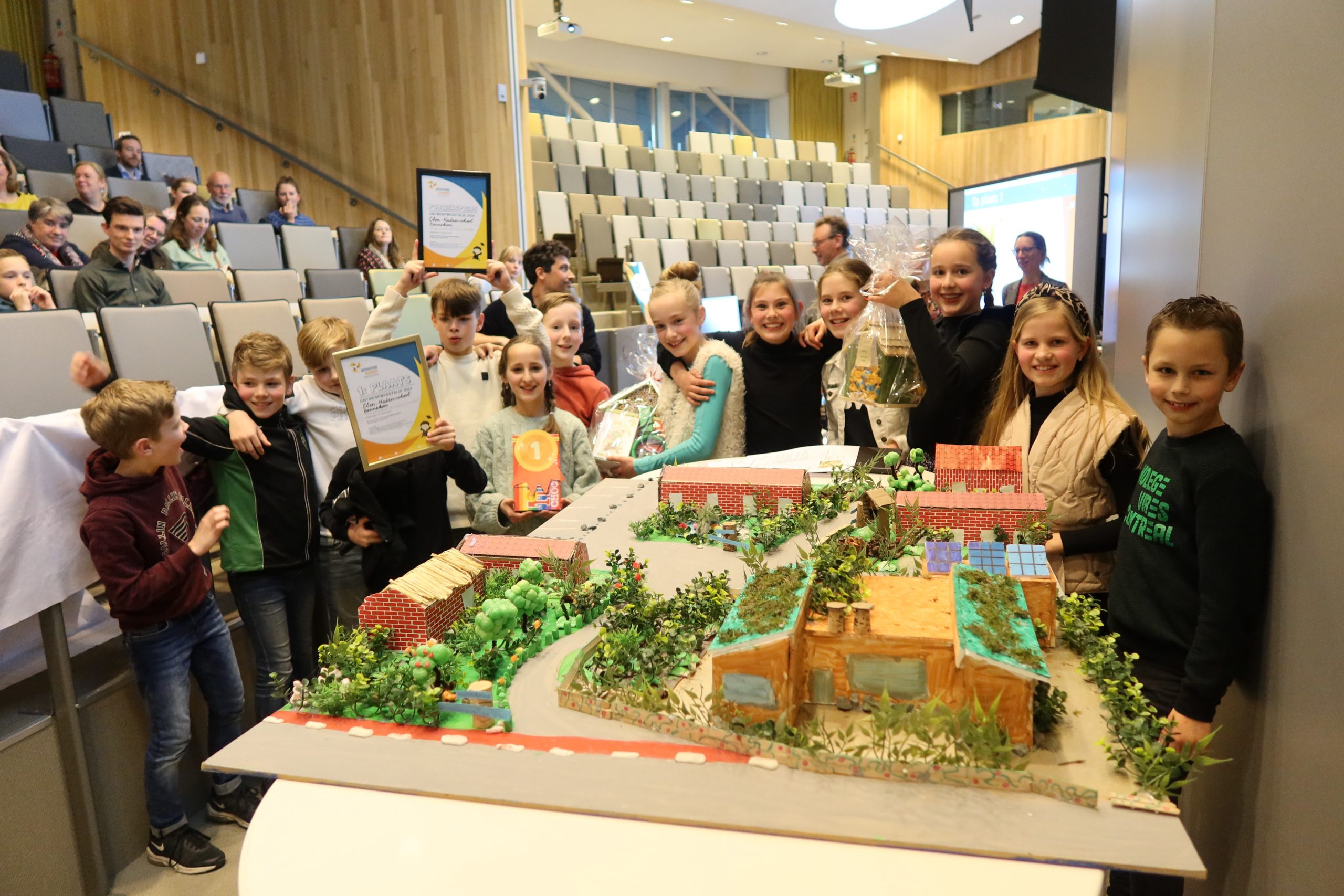 Bennekom class for gifted primary schoolchildren wins the Science Hub design competition. Photo Ruben van Meurs. Foto Ruben van
Bennekom class for gifted primary schoolchildren wins the Science Hub design competition. Photo Ruben van Meurs. Foto Ruben van 